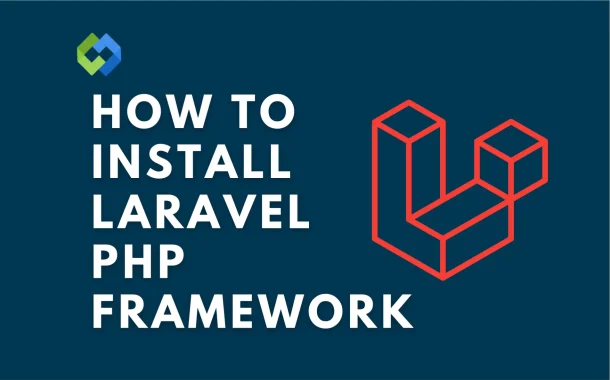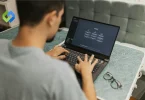Laravel’s importance in web development lies in its ability to streamline the development process. It reduces the need for repetitive coding and offers useful tools that save time. With Laravel, developers can focus on building features rather than dealing with complex coding tasks.
Table of Contents
Table of Contents
Installing Laravel Using Composer
Ensure Composer is Installed
To begin, you must have Composer installed on your system. Composer is a dependency manager for PHP that makes it easy to manage libraries and packages required for your projects. You can download it from the official Composer website and follow the installation instructions for your operating system.
Navigate to the Project Directory
Once Composer is installed, open your terminal or command prompt. Go to the directory where you want to create your new Laravel project. This is where Laravel will be installed. Composer will manage all necessary dependencies automatically.
Install Laravel Using Composer
Now, use the Composer command to install Laravel. This command will download the latest version of Laravel and set up the essential project files. Laravel’s folder structure, including routes, views, and controllers, will be created, so you can begin working on your project.
Start Working on Your Laravel Project
After installation is complete, your Laravel project is ready for use. You can now customize and extend the framework to suit your needs, ensuring that you’re working with the most up-to-date version of Laravel.
Creating a New Laravel Project
Set Up the Project Directory
To create a new Laravel project, first, ensure that you are in the directory where you want your project to reside. This can be done by navigating through your terminal or command prompt to the desired location on your system.
Use Composer to Create the Project
With Composer installed, you can now create a new Laravel project. The Composer command will generate the project structure, including all necessary folders and files like routes, views, and controllers. By running the command, you initiate the download and installation of Laravel’s latest version.
The Laravel Folder Structure
After creating the project, you will notice that Laravel sets up several key directories and files. Some of the essential folders include app for application logic, resources for views and assets, and routes for web and API routes. Each folder serves a specific purpose in organizing your project.
Start Developing Your Laravel Application
Once the project is created, you can begin developing your Laravel application. From here, you can configure settings, create routes, design views, and implement business logic to build out your application’s features.
Setting Up Environment Configuration
Locate the .env File
After creating a new Laravel project, the next step is setting up the environment configuration. Laravel uses an .env file located in the root directory of your project. This file is essential for managing environment-specific settings like database connections, mail services, and application keys.
Update Application Settings
In the .env file, you can define various configuration options. For instance, set the APP_NAME, APP_ENV, and APP_DEBUG to match your development environment. You’ll also find sections for configuring database settings like DB_HOST, DB_PORT, DB_DATABASE, DB_USERNAME, and DB_PASSWORD.
Configure Additional Services
Besides database settings, the .env file allows you to configure other services your application might use, such as mail and cache services. By editing these values, you ensure that your Laravel application works seamlessly with external services in your development or production environment.
Save and Test Configuration
Once you’ve made the necessary changes, save the .env file. You can test the configuration by running your Laravel application. If everything is set up correctly, your application should connect to the database and other services without any issues.
Configuring the Database
Set Up Database Connection
To configure the database in Laravel, start by editing the .env file. Here, you’ll set the database connection details such as the host, port, database name, username, and password. These settings allow Laravel to connect to your database. Laravel supports various database systems, including MySQL, PostgreSQL, and SQLite.
Configure Database Settings in config/database.php
In addition to the .env file, Laravel also uses a configuration file located in config/database.php. This file defines the default database connection and other settings. Make sure the database connection settings in this file match what you’ve set in the .env file for consistency.
Run Database Migrations
After setting up the database configuration, you can use Laravel’s built-in migration system to create tables and manage your database schema. Migrations are a way to version control your database structure, making it easier to modify and share the schema across different environments.
Test the Database Connection
Once the database settings are configured, test the connection by running a migration or by accessing the database through your Laravel application. If the configuration is correct, the application will be able to interact with the database, allowing you to store and retrieve data seamlessly.
Running the Laravel Development Server
Start the Development Server
Once your Laravel project is set up and the environment configuration is complete, you can run the Laravel development server. Laravel comes with a built-in server that makes it easy to test your application locally. To start the server, open your terminal and navigate to your Laravel project directory. Then, use the Artisan command to run the server.
Access the Application Locally
After running the server, Laravel will automatically start a development server at a specific URL, typically http://127.0.0.1:8000. You can open this address in your browser to view your application running locally. This allows you to test and develop your application without needing an external server setup.
Stop the Development Server
To stop the development server, simply return to your terminal and press Ctrl + C. This will halt the server, and your local environment will no longer be running. You can restart the server anytime you need to continue working on your application.
Verifying Installation
Check the Welcome Page
After running the Laravel development server, the first step in verifying your installation is to visit the default Laravel welcome page. Open your browser and go to http://127.0.0.1:8000. If you see the Laravel welcome screen, it means the installation was successful, and everything is working properly.
Test Basic Laravel Features
Next, you can test other basic features of Laravel to ensure proper installation. For instance, try accessing some default routes like /about or /contact. If these routes are functional, it’s a good sign that your Laravel application is set up correctly.
Verify Database Connection
To ensure that your database is connected properly, you can check if the database operations are working. Try running a migration command or accessing a database table through Laravel’s Eloquent ORM. If the database interaction works without errors, your database configuration is correct.
Use Artisan Commands
Finally, you can run various Artisan commands to test Laravel’s functionality. For example, use the php artisan –version command to check the Laravel version or php artisan list to see available commands. These commands confirm that your Laravel environment is functioning as expected.
Conclusion
Installing Laravel is a straightforward process when you follow the right steps. By ensuring that Composer is installed and setting up your project with the correct configurations, you can get Laravel running smoothly on your local machine. It simplifies web development with built-in tools and features.
Once Laravel is installed, you can begin developing your application. From setting up the database to running the development server, Laravel makes it easy to build powerful web applications. With proper installation and configuration, you’re ready to start creating and customizing your Laravel projects.














